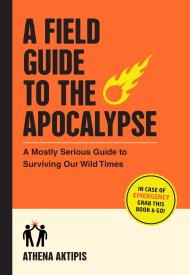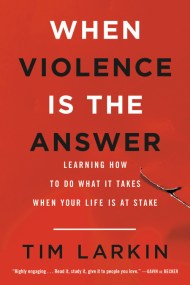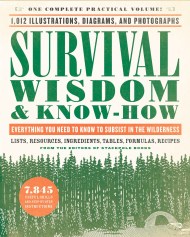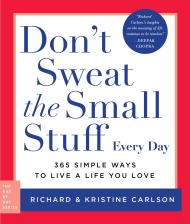Shopping Cart
The Power of Awareness
And Other Secrets from the World's Foremost Spies, Detectives, and Special Operators on How to Stay Safe and Save Your Life
Description
What's Inside
THE ASSASSIN
NOTE: The names, location, and mission in the following story are masked due to certain sensitive national security considerations.
Somewhere on the Arabian Peninsula
Billy Sole sat in the passenger seat of a dusty SUV observing as the mission went down several hundred yards away. The sun was bright, almost blinding, its rays magnified by the glare of the nearby Arabian Sea. It was midsummer hot, and the ocean provided no relief, but at least their vehicle was air-conditioned. Technically speaking, Billy, a thirtysomething Air Force special operations veteran from one of America’s “black” (operating under highly restricted congressional oversight) Special Mission Units, wasn’t directly involved in the nearby operation. He and his three compatriots were there in case the man executing the clandestine mission should somehow come under threat from Al Qaeda.
Dressed in jeans and a well-worn collared shirt, Billy shifted in his seat, trying to get comfortable despite the Glock 19 shoved into the small of his back. At his feet lay a go bag with a compact H&K MP7 machine pistol and body armor, in case things went sideways. He watched for trouble up and down the busy road where they were parked. The locals were bustling along on the commercial strip, going about the daily business of trying to make a living in a dusty city by the sea. The heat tempered the foot traffic, even though this part of the city was something of a social destination. It was a little boring conducting overwatch for a clandestine mission— nothing ever happened, which was exactly the point of clandestine work.
Parked along the side of the road, wedged in between a line of nondescript cars, they blended in with the mix of private and commercial traffic. The locals took no notice of the men, who went to some lengths to ensure what was visible from the outside of the SUV was nondescript. This included not wearing sunglasses, because sunglasses would draw attention in this country.
The driver observed a cab pull up a car length and a half behind them and double-park. When no one got out, he mentioned it to Billy and the other two occupants, all of whom took note but paid little attention. After nearly a minute the lone passenger hadn’t emerged, so Billy cast a discreet backward glance, but gleaned nothing other than the passenger was taking his time, arguing over the taxi fare or perhaps completing a phone call.
Billy turned his attention instead to a secret electronic device his team was using for targeting terrorists. The four men in his car were the best-trained black special operators in America, and therefore the world. As he focused on the device, the hair on the back of his neck began to stand up. He looked up, but nothing had changed on the street, it was the same crowd he’d been watching for two months. The cabbie and passenger were still in their double-parked space, and he brushed off the feeling.
The team’s driver announced that the passenger had exited the cab behind them but was momentarily standing in their blind spot. A moment later the cab drove past the Americans, on its way to another fare. The passenger walked up the sidewalk and passed by the side of the Americans’ SUV. He stopped suddenly by the front tire of the vehicle, turned to look inside, and pulled a pistol from inside his shirt. In one swift motion he jammed it against the passenger window and fired three point-blank rounds.
Without a spared glance he turned and walked in the direction he’d come, stuffing the weapon back into his shirt, and promptly disappeared.
In the SUV there was a deafening silence after the ear-shattering explosions of the pistol shots. Glass shards were scattered both on the dash and the men from the damaged bulletproof glass that had thwarted the assassin’s attempt. The assassin’s window choice had merely been to ensure he killed the most important American, who would surely be sitting in the front passenger seat. But now there was another problem, and in the immediate aftermath, the team’s training kicked in. Billy rapidly scanned through the windows, including the passenger glass with its neat and tight three-shot grouping, for what would come next, most likely a vehicle-borne improvised explosive to kill them all.
They needed to move. Now. To remain in place was to invite death, and despite the adrenaline and a near fatality, thanks to years of training and practice, a rush of decisions and actions immediately ensued. The driver plotted his course. One of the men made a call reporting the assassination attempt. Weapons now at the ready, the others checked for additional avenues of further attack and scanned human faces for signs indicating potential assault. With the four men on high alert, the driver quickly pulled out into traffic as they all continued scanning for the next threat. All of these actions happened in a handful of seconds. Threading their way through the stunned crowds, the men disappeared into the dust and commerce of the Arabian heat.
It was a fortunate failure, and the question the four men asked each other when they’d arrived back at their safe house was how? They compared their individual experiences from the time the taxi appeared, revealing that each of them had felt the same sensation as Billy—something had been wrong and each of their hackles had gone up. Even though their immediate reactions to safeguard against further attempts were appropriate, the question remained: How had they allowed themselves to become the victims of an assassination attempt? This was a critical tactical and operational consideration, the nuts and bolts of clandestine work, in the midst of their ongoing and dangerous mission.
However, the more important question was why? Why had four of the most highly trained clandestine special operatives in the world given power and control of their safety over to an individual with lethal intent? Understanding why they had willingly allowed it to happen and how to prevent it is the purpose of this book.
INTRODUCTION
Like Billy (a pseudonym) and his team, who were fortunate to survive their assassination attempt, I’ve spent the majority of my life and career engaging in some of the most high-risk and high- consequence activities one human can pursue. In fact, at the time of the attack, I was Billy’s squadron commander. I am also a veteran of one of the most violent sustained gunfights in the past half century, which took place in the remote capital of the ill-fated East African nation that is Somalia. You may know that operation by its popular name, Black Hawk Down. It was a mission that saw 200 of my fellow airmen, soldiers, and sailors combat thousands of militia and cost 18 Americans and perhaps 1,500 Somalis their lives. The outcome of that single gunfight changed US foreign policy for decades and set in motion the events that would lead to a post-9/11 world.
While seminal, that mission was but one of many I conducted both overtly and clandestinely around the world. As a Combat Controller I’ve snuck into countries using aliases, slipping out again without a trace of my having passed, learned how to evade enemy patrols, resist interrogation, and escape fortified imprisonment. I spent de- cades jumping from aircraft as a military high-altitude/low-opening (known by the acronym HALO) parachutist and professionally rated demonstration skydiver, accumulating several thousand jumps. I’ve dove open- and closed-circuit systems in the frigid North Pacific and tropical Andaman Sea alike. The training to become a USAF Combat Controller is one of the longest, physically and mentally toughest, and most intellectually demanding of any special operations force in the world.
Later in my career, I established—and then served as the first commander of—two special operations squadrons, the second of which is one of the blackest Special Mission Units in the world. An organization whose mission is sensitive enough that its very name and purpose remain top-secret.
This type of life and activities are not consequence-free. Losing friends, experiencing and inflicting violence, failing to save some- one’s life. All of these alter and damage you. Killing people, in particular, even when justified, is a net negative life experience. It does not develop you or advance you as a human. I’ve struggled with all of these things and in some ways always will. As a means of managing PTSD and finding my own version of peace, I added to my military exploits what is arguably the world’s most dangerous sporting activity: BASE jumping. BASE jumping, if you are unfamiliar, is a type of parachuting that removes the airplane from the equation. The sport, which is completely unregulated, enjoys a well-deserved renegade—perhaps “notorious” is a better term—reputation, since much of it touches on illegality. I’ve jumped from the roofs of Las Vegas hotels and 1,400-foot radio antennas, though the means by which I managed to gain access to these structures are best left unrevealed.
It is a high-energy and exciting sport but exacts a comparably high price. For the first decade I BASE-jumped, I lost at least one friend to the sport every year. BASE jumpers have a saying: “BASE- jump long enough and it will eventually kill you.” An accurate assessment, and I’m certainly not immune. I once had an inexplicable wall strike after opening my parachute on a 500-foot cliff I’d jumped at least 100 times. I was lucky to survive, and that mentally threw me off my game for years. So it’s safe to say I understand risks and consequences, and that goes some way in explaining why it is rare for me to BASE-jump these days.
Repeated exposure to extreme risks and life-threatening danger such as I’ve experienced can lead to extreme coping methods. I’ve seen many good men and women destroyed by the long-term effects of risk and stress, and I was one of them for some time. Self-destructive behavior and overindulgence with alcohol and drugs (legal or otherwise) are common. In the end, BASE jumping may not have been the best means to find peace, but hey, it beats the hell out of the bottom of a bourbon or pill bottle.
—————
In my special operations profession, I had the good fortune to work with some of the best military minds and organizations in the world. Units such as my own Air Force special operations squadrons and others like Delta Force and SEAL Team Six, all of whom are foremost experts in risk calculation and mitigation. My unusual career also afforded me the opportunity to work with some remarkable people in law enforcement, from the FBI’s counterterrorism and counterintelligence units as well as agents from the Commerce Department and Homeland Security Investigations. In conjunction with the CIA and NSA I spent several years staring at very difficult intelligence problems that threatened world stability. The CIA also taught me the skills needed to walk in an urban environment unnoticed and with confidence regarding both foreign intelligence services and criminals, who often use similar tactics and in some countries are one and the same. This was in addition to my own SOF (special operations forces) training.
Because of that unique career, safety and risk calculation spliced themselves into, and then became, the fabric of my DNA. And I can confidently say I’ve used those risk-calculation skills to save my life on multiple occasions. But I didn’t start that way. Nobody does. Understanding and mitigating risk is a learned activity, but you needn’t join special operations, stand atop the edge of a 500-foot-tall Vegas casino with a bundle of fabric on your back, counter-terrorist plots, or try and solve existential threats like nuclear proliferation to understand them. In fact, you needn’t be a professional at all to be safe in many higher-risk situations that you might easily find yourself in or to thwart potential attacks on your own life. In some circum- stances, there are distinct advantages to being a nonprofessional, and I’m going to show you how to use them to thwart the bad guys.
I’ve created six fundamental rules that you can apply in any circumstance from the world of special operations, intelligence spooks, and world-class law enforcement agencies to keep safe. I’ve refined them over three decades and used them to walk well-known metropolises like Bangkok and Manhattan, traverse more exotic cities like Dhaka and Nairobi, and operate in downright dangerous and contested locations such as Mogadishu and Sana’a. Whether you’re an international business traveler walking the Rive Gauche in Paris in pursuit of a night out, or a soccer parent navigating an unfamiliar part of town with a car stuffed full of distracting preteens, these rules can and will save your life.
THE RULES
As I developed these six safety rules, I came to the realization they fell into three separate categories, and this conveniently made them easier to understand and implement. I refer to these categories as Know, Prepare, and Act.
KNOW—In personal safety, knowing means truly seeing and comprehending your surroundings and what is happening in them. Unfortunately, the vast majority of people around you do not comprehend, and the purpose of this book is to ensure you are not one of them. To do that, you need to know Rule 1 (Be Situationally Aware) and Rule 2 (Trust and Use Your Intuition) and understand that they are absolutely critical. Without both, you are blind. Everything else you do to be safe builds on this dual foundation, and for that reason these rules comprise the biggest sections in the book.
PREPARE—Understanding threats and potential threats allows you to also understand whether there is something to be concerned about. And if there is, what you should do about it. This is where many people stop short of what’s necessary to ensure their own safety because they don’t have a deliberate process to implement. Rule 3 (Determine If You Have a Problem) and Rule 4 (Develop a Plan) allow you to shape and better determine outcomes by preparing you in the event you need to take action.
ACT—Ultimately, we must take action if we are under threat or potential threat. Rule 5 (Act Decisively) and Rule 6 (The Two Rs) are merely the final action steps in resolving or avoiding a crisis and simultaneously the easiest and possibly the most difficult. Acting decisively, if you follow the rules in this book, is the simplest. If you understand your situation and have a plan, to act is both clear and straightforward because you’ve already done the work. You’re simply implementing that plan.
In Rule 6 (The Two Rs) you’ll learn that to Regroup is to take stock immediately after a crisis to determine what, if anything, you need to do next, and also that distance equals safety. It is the second R, Recover, that many people find difficult, especially if there was violence involved. However, a key part in any return journey toward psychological and emotional well-being is to contact the authorities and to find support (professional or personal). After a crisis, we always must go on with life, and you deserve to recover to the fullest extent possible.
THE TOOLS
In addition to the rules for personal safety, I’ve designed six tools to increase your security in different ways. These tools are neither sequential nor synchronized but are there as resources.
Tool 1 (Preparedness) is all about being ready before something happens. Your home is a place for special considerations. Within its walls are contained your most important possessions as well as everything you need for safety. The key lies in understanding its strengths and weaknesses combined with impartial assessment, prudent planning, and crisis scenario rehearsal. I also explore public transportation, weapons, and self-defense training.
Tool 2 (Reducing Your Criminal Target Profile) is designed to make you aware that what you wear, how you act and even walk are all signals you transmit to the people around you. While the foundation of your safety rests with the six rules, you can do much to reduce your “target” profile by making a few simple choices.
Tool 3 (Armed Threats and Active Shooters) is a special-interest item. If you’re an American it’s more of a real concern than if you live in virtually any other country in the developed world. The Active Shooter Tool will help you quickly assess your situation and take action and can save your life in the unlikely and unfortunate event you find yourself in one.
In Tool 4 (Reducing Your Personal Information Footprint) you’ll be shocked at just how much of your personal life you transmit through your phone or local Starbucks internet hot spot. More important, you’ll come away armed with enough information to know how not to let details slip out unintended to criminals.
Tool 5 (Digital to Three-Dimensional Dating) is not about your online profile and how to meet people but what you should understand when you transition from digital interaction to a real live three-dimensional meeting. Because it’s your life and it shouldn’t be wasted, or risked, on the wrong person.
Tool 6 (Travel Planning)—whether for business or holiday—is there to help you with such tasks as destination assessment, hotel and room selection, tourist considerations, and dealing with emergency situations while away from home.
ART VS. SCIENCE
Many security experts view personal safety as some kind of clinical science. This is a natural thing for experts to do, allowing them as it does to demonstrate their expertise and knowledge of things esoteric. Many of these (it must be said) self-appointed experts use formulas and numbers to try and reduce everything to some sort of numeric calculation. One of the reasons I wrote this book was my repeated encounters with poorly written and self-promotional books on safety. While I am an expert on aspects of the subject of risk and safety, I know I’m not the foremost in any one topic. The key to pro- viding the most value in this book was creating a team comprised of expert minds. Throughout my decades of special operations, everything I ever accomplished that was difficult, complex, or rewarding came about through teamwork. The best plans and ideas are realized through the collaborative process. For that reason, you’ll find these pages filled with these other experts’ stories and lessons.
I see personal safety as more art than science because there isn’t some number or calculation or equation that you can arrive at or point to and say, “Aha! That’s my situation. And therefore, I must do [fill in the blank].” Reality is more fluid than that. You have to go with it and not fight it, but it does require you to start with a foundation. The most essential lessons on the following pages are having accurate Situational Awareness and tapping into and listen- ing to your Intuition and reinforcing them until they become second nature. That is the art that emanates from the innate tools several million years of evolution have provided you, though they may be dormant or suppressed from living in the convenient and modern world. Everything else, and I do mean everything, flows from those two. Without them none of the other rules work. Let me restate that another way. Here are the two most important sentences of this book: Situational Awareness and Intuition are your Power of Awareness. And your Power of Awareness is your personal safety.
CONCLUSION
All of the above leads us to this book and what it is. And also what it isn’t. This book is primarily a how-to manual and reference guide for your personal safety before something happens. This is not a book that needs to be read in its entirety first and then absorbed through reflection. For some people it will work better in installments, particularly Rules 1 and 2. Not only do Situational Awareness and Intuition form the foundation of the book, they are powerful tools in and of themselves, lending their value to almost any situation or goal. This book does not provide absolutes or guarantees, nor cover every situation in which you may find yourself. It does deliver sound advice and tactics mined from the rich veins of hard-earned experience.
Also, you shouldn’t view the content on these pages as something you read once and then move on with your life. This material should not be reviewed and forgotten. It won’t truly make a difference in your personal safety unless you come back to it and practice it in your life. That’s the reason I’ve included exercises and why they’re available for free on my website. In special operations we tend to be better at certain complex actions, such as calling in airstrikes while under fire or clearing buildings of terrorists, not because we’re superior people (we’re not) but because we practice and perfect these skills more than anyone else. You can do this too in your approach to your own personal safety, and I encourage you to do so and also to revisit passages of the book where you feel you could benefit most.
Most people would agree that personal safety is a serious topic. But it needn’t be approached somberly. There is a story about Sigmund Freud when he had cancer later in life that I’ve always enjoyed. A contemporary approached him to discuss a point of psychology but in deference to Freud’s condition said, “Perhaps I’d better not talk to you, because you’ve got this cancer which is very serious. You may not want to talk about this.” To which Freud replied, “This cancer may be fatal, but it’s not serious.” The perfect response. For surely his cancer was not something to be dismissed, but it needn’t hinder what he was engaged in at that moment by casting a somber shadow. The two were distinct and separate.
My approach to life and safety is very much in line with Freud’s sentiments, at least regarding seriousness. And yours should be as well. Being overly serious or somber about your safety can lead to a type of bias and paranoia where everything can be interpreted as threats. Not only is that not reality, it’s not effective either. So, it’s a serious business, personal safety, but we’re not going to be overly serious. Together we’re going to instill confidence and a positive attitude, which are significant safety attributes in and of themselves, and this book is designed to foster both.
Outside these pages and in the real world, if you follow my rules in situations that would benefit from them, nothing will happen. That’s because, by definition, you can’t prove a negative. Such is the way of events with multiple variables and involving humans. I’ve been fortunate to have survived a number of serious experiences, avoided terrorist attacks as well as civil unrest in foreign countries, and, I’ve no doubt, skirted criminal intent. But how close was I really to losing my life in any of those situations? I’ll never know. All that is to say, like me, you’ll never actually or fully know what threats or potential threats your Situational Awareness, Intuition, and prudent actions saved you from. That’s a good thing, by the way.
But enough introduction. Let’s begin digging into the rules, which is the reason you picked this book up. And they start, as most beginnings do, with a story.













